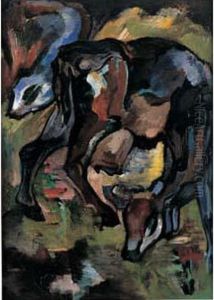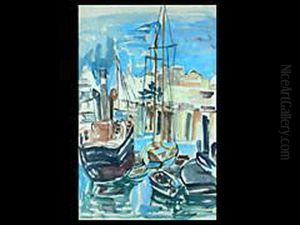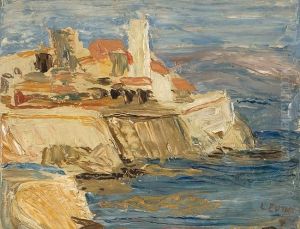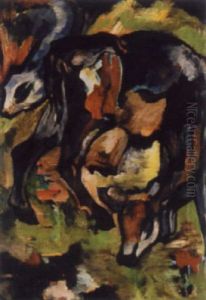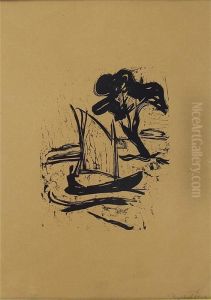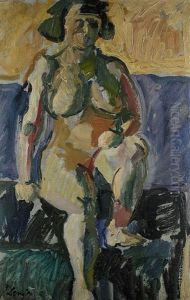Julo Levin Paintings
Julo Levin was a German-Jewish artist, born on January 17, 1901, in Stettin, Germany (now Szczecin, Poland). His artistic talent emerged early, and despite the turbulent times, Levin pursued his passion for art with vigor. He moved to Düsseldorf in 1916 to study art, joining the Düsseldorf Academy of Arts in 1919, where he was influenced by Expressionism and the works of his contemporaries. Levin's early career in the 1920s was marked by a keen exploration of expressionist techniques, and he quickly became an integral part of the artistic community in Düsseldorf.
Levin's work comprised mainly portraits, landscapes, and urban scenes, capturing the essence of his surroundings with a distinctive, expressive style. He was deeply engaged with the social issues of his time, and his art often reflected his concerns about the plight of the marginalized and the political turmoil of the Weimar Republic. Despite the growing threat of Nazism, Levin remained in Germany, a decision that would drastically impact his life and work.
As the Nazis rose to power in 1933, Levin's situation became increasingly precarious. Being Jewish, he faced mounting persecution and was eventually forbidden from practicing his art professionally. His works were classified as "degenerate" by the Nazi regime, and he was barred from exhibiting. Levin, however, continued to create art in secret, documenting the harsh realities of life under Nazi rule. His later works from this period provide a poignant insight into the resilience of the human spirit in the face of oppression.
Tragically, Julo Levin's life was cut short during the Holocaust. In 1943, he was deported to the Auschwitz concentration camp, where he was murdered on December 14 of the same year. Despite the efforts to erase his legacy, Levin's art has survived, serving as a powerful testament to his talent and the indomitable spirit of those who resist tyranny. Today, Levin is remembered as a significant figure in German expressionist art, with his works held in numerous collections and museums, where they continue to inspire and move audiences around the world.
